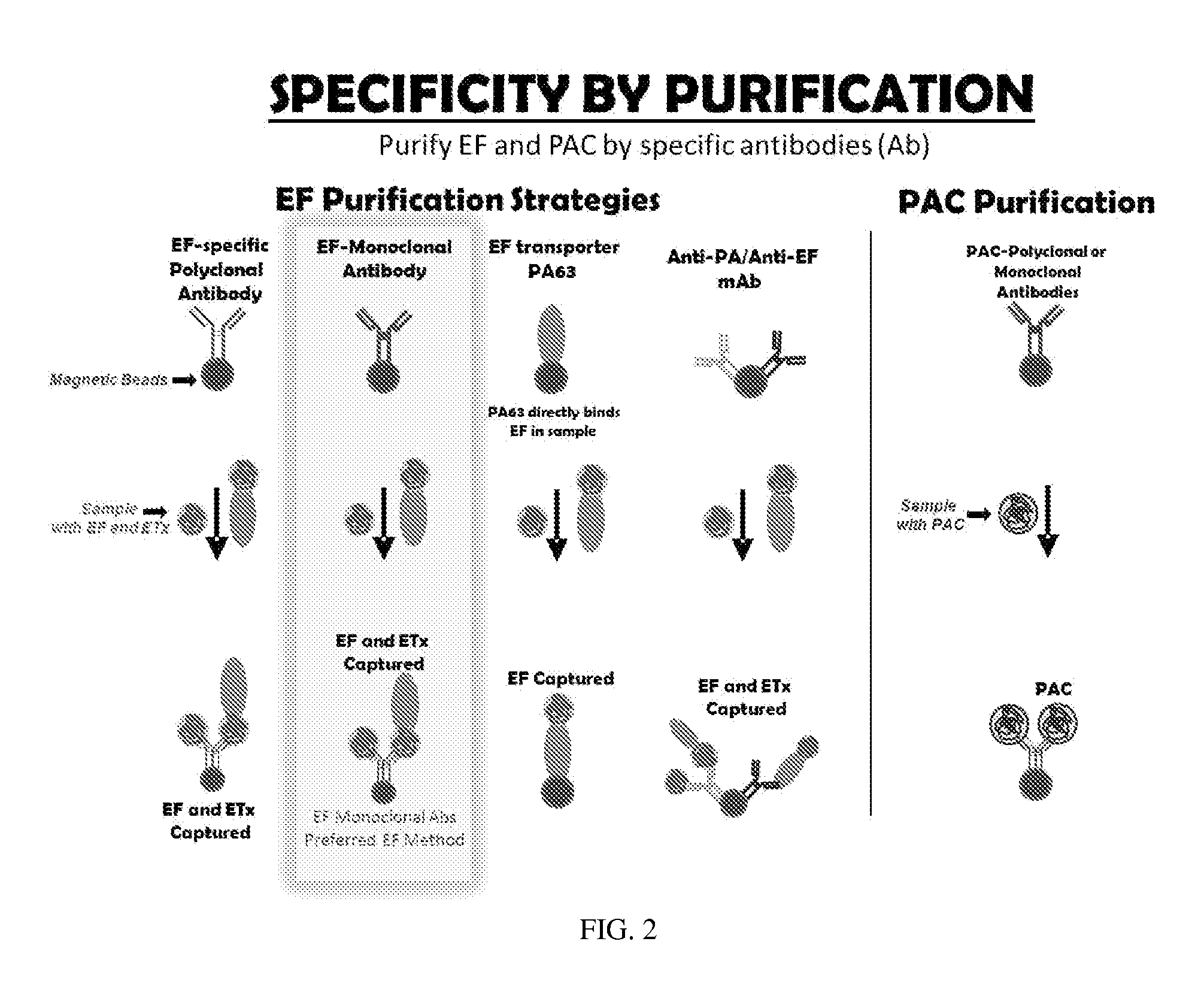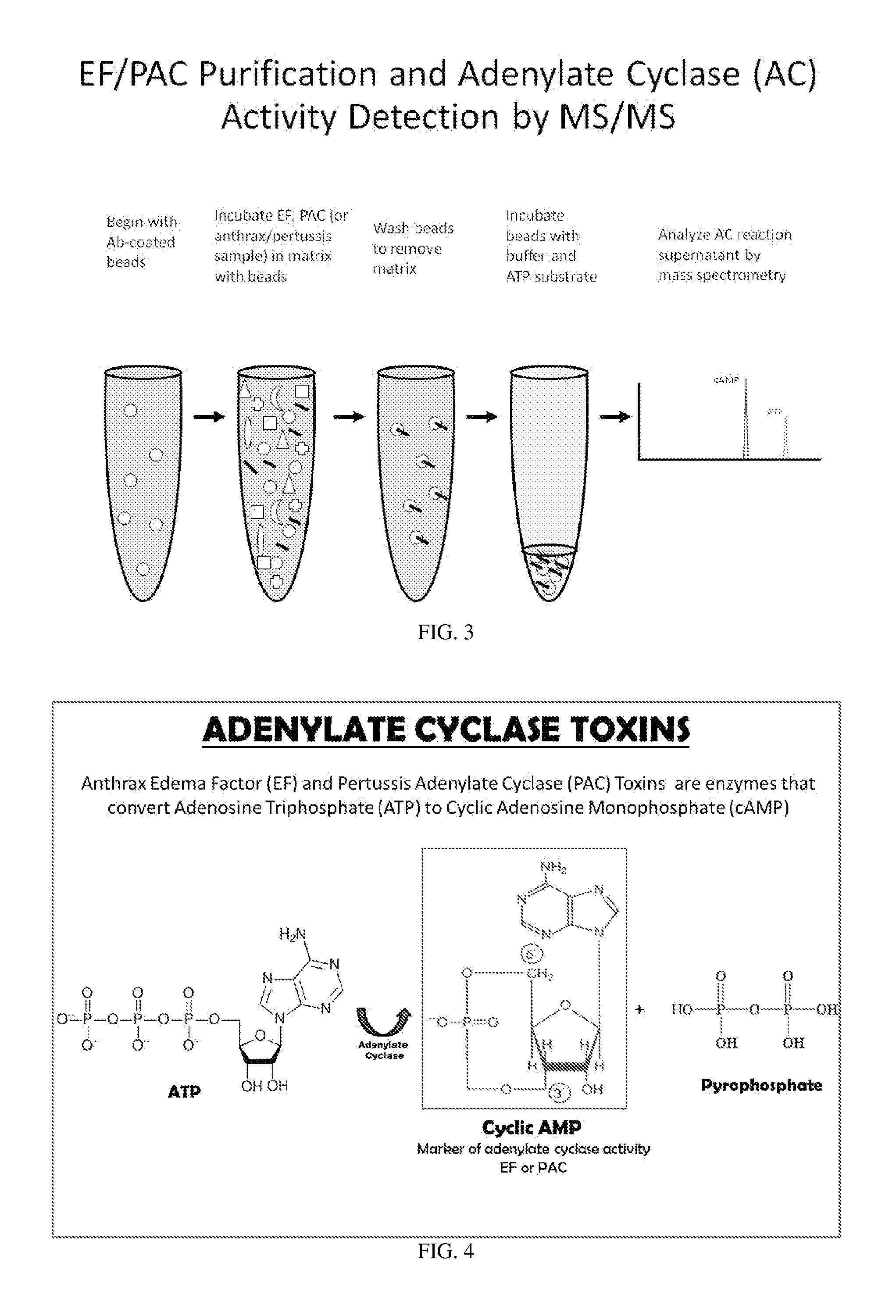Detection of adenylate cyclase
a technology of adenylate cyclase and detection method, which is applied in the field of disease diagnosis, can solve the problems of cytokine dysregulation and immune dysfunction, shock, respiratory failure, death, etc., and achieve the effect of gentle and rapid separation
- Summary
- Abstract
- Description
- Claims
- Application Information
AI Technical Summary
Benefits of technology
Problems solved by technology
Method used
Image
Examples
example 1
[0055]Preparation of Tosyl-Activated Magnetic Beads.
[0056]Tosyl-activated magnetic beads are obtained from Invitrogen. 20-100 μl of bead suspension are used to covalently link immunoglobulin (IgG) from a 100 μl sample containing IgG to the beads according to the manufacturer's protocol. To separate the beads, the reaction tube is placed on a magnet for 1 min and the resulting supernatant discarded by aspiration. The beads are resuspended in phosphate buffered saline with 0.05% Tween20, pH 7.3 (PBS-TW) and stored until ready for use. Thorough washing is achieved by repeating the magnetic pelleting and resuspension steps three times
example 2
[0057]Coating Tosyl-Activated Beads with Desired Anti-EF or Anti PAC Antibody.
[0058]Anti-EF, anti-PA, or anti-PAC (or other antibodies) are coated onto magnetic beads forming magnetic antibody beads (e.g. MABs). EF or PAC-specific MABs are prepared using mouse monoclonal anti-EF IgG or anti-PAC IgG according to the manufacturer's protocol (Invitrogen) using 40 μg IgG / 100 μl magnetic bead suspension.
example 3
[0059]Purification and Concentration of EF from Serum.
[0060]A serum, plasma, pleural fluid or other biological sample is obtained from a patient or infected animal. The sample is diluted 1:5 in 500 or 1000 μl PBS-TW and mixed gently with 20 μl EF MABs for 1 hour. The beads with EF and / or ETx bound antibody are retrieved, washed three times in PBS-TW and reconstituted in PBS-TW for further analyses by enzymatic reaction and mass spectrometry, as shown in FIGS. 2 and 3.
[0061]One approach for isolation of EF uses protective antigen (PA) antibody (anti-PA IgG) on MABs for total EF (EF+ETx) retrieval. The first step begins with addition of free activated PA63 that binds to free EF converting it into complexed form, ETx, rendering all EF as the complexed form ETx. Then a PA-MAB that is specific for the distal cell receptor binding portion of PA63 as depicted in FIG. 2 where the antibody binds to PA63 remote from the PA-EF (ETx) interface is used to capture the total EF as converted to ETx...
PUM
| Property | Measurement | Unit |
|---|---|---|
| volumes | aaaaa | aaaaa |
| pH | aaaaa | aaaaa |
| volume | aaaaa | aaaaa |
Abstract
Description
Claims
Application Information
 Login to View More
Login to View More - R&D
- Intellectual Property
- Life Sciences
- Materials
- Tech Scout
- Unparalleled Data Quality
- Higher Quality Content
- 60% Fewer Hallucinations
Browse by: Latest US Patents, China's latest patents, Technical Efficacy Thesaurus, Application Domain, Technology Topic, Popular Technical Reports.
© 2025 PatSnap. All rights reserved.Legal|Privacy policy|Modern Slavery Act Transparency Statement|Sitemap|About US| Contact US: help@patsnap.com



